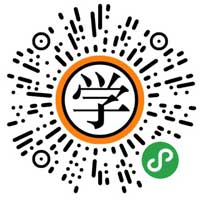开放宏观经济学讲义,Lectures in Open Economy Macroeconomics
发布时间:
来源:人大经济论坛
Contents
1 A First Look at the Data 1
2 An Endowment Economy 7
2.1 The Model Economy....................... 7
2.2 Response to Output Shocks................... 13
2.3 Nonstationary Income Shocks ................. 16
2.4 Testing the Model ........................ 21
3 An Economy with Capital 25
3.1 The Basic Framework ...................... 25
3.1.1 A Permanent Productivity Shock ............ 28
3.1.2 A Temporary Productivity shock............ 32
3.2 Capital Adjustment Costs.................... 34
3.2.1 Dynamics of the Capital Stock ............. 36
3.2.2 A Permanent Technology Shock ............. 38
4 The Real Business Cycle Model 41
4.1 The Model ............................ 42
4.2 The Model’s Performance .................... 51
4.2.1 The Roles of Persistence and Capital Adjustment Costs54
4.3 Alternative Ways to Induce Stationarity............ 55
4.3.1 External Discount Factor (EDF)............ 56
4.3.2 External Debt-Elastic Interest Rate (EDEIR) .... 58
4.3.3 Internal Debt-Elastic Interest Rate (IDEIR) ..... 60
4.3.4 Portfolio Adjustment Costs (PAC)........... 62
4.3.5 Complete Asset Markets (CAM) ............ 64
4.3.6 The Nonstationary Case (NC) ............. 68
4.3.7 Quantitative Results................... 68
4.3.8 The Perpetual-Youth Model ............... 72
iiiiv CONTENTS
4.4 Appendix A: Log-Linearization................. 85
4.5 Appendix B: Solving Dynamic General Equilibrium Models. 86
4.6 Local Existence and Uniqueness of Equilibrium........ 97
4.7 Second Moments......................... 98
4.8 Impulse Response Functions ...................102
4.9 Matlab Code For Linear Perturbation Methods........102
4.10Higher Order Approximations ..................103
4.11Exercise..............................104
4.11.1An RBC Small Open Economy with an internal debt-
elastic interest-rate premium ..............104
5 The Terms of Trade 107
5.1 Defining the Terms of Trade ...................108
5.2 Empirical Regularities......................108
5.2.1 TOT-TB Correlation: Two Early Explanations....110
5.3 Terms-of-Trade Shocks in an RBC Model ...........119
5.3.1 Households........................119
5.3.2 Production of Consumption Goods ...........122
5.3.3 Production of Tradable Consumption Goods .....123
5.3.4 Production of Importable, Exportable, and Nontrad-
able Goods ........................124
5.3.5 Market Clearing .....................126
5.3.6 Driving Forces ......................126
5.3.7 Competitive Equilibrium ................127
5.3.8 Calibration........................127
5.3.9 Model Performance ....................131
5.3.10How Important Are the Terms of Trade? .......133
6 Interest-Rate Shocks 135
6.1 An Empirical Model.......................138
6.2 Impulse Response Functions ...................140
6.3 Variance Decompositions .....................146
6.4 A Theoretical Model.......................151
6.4.1 Households........................152
6.4.2 Firms ...........................157
6.4.3 Driving Forces ......................161
6.4.4 Equilibrium, Functional Forms, and Parameter Values162
6.5 Theoretical and Estimated Impulse Responses .........165
6.6 The Endogeneity of Country Spreads ..............167CONTENTS v
7 Sovereign Debt 171
7.1 Empirical Regularities......................173
7.2 The Cost of Default .......................177
7.3 Default Incentives With State-Contingent Contracts .....183
7.3.1 Optimal Debt Contract With Commitment......184
7.3.2 Optimal Debt Contract Without Commitment ....186
7.4 Default Incentives With Non-State-Contingent Contracts ..200
7.5 Saving and the Breakdown of Reputational Lending .....208
1 A First Look at the Data 1
2 An Endowment Economy 7
2.1 The Model Economy....................... 7
2.2 Response to Output Shocks................... 13
2.3 Nonstationary Income Shocks ................. 16
2.4 Testing the Model ........................ 21
3 An Economy with Capital 25
3.1 The Basic Framework ...................... 25
3.1.1 A Permanent Productivity Shock ............ 28
3.1.2 A Temporary Productivity shock............ 32
3.2 Capital Adjustment Costs.................... 34
3.2.1 Dynamics of the Capital Stock ............. 36
3.2.2 A Permanent Technology Shock ............. 38
4 The Real Business Cycle Model 41
4.1 The Model ............................ 42
4.2 The Model’s Performance .................... 51
4.2.1 The Roles of Persistence and Capital Adjustment Costs54
4.3 Alternative Ways to Induce Stationarity............ 55
4.3.1 External Discount Factor (EDF)............ 56
4.3.2 External Debt-Elastic Interest Rate (EDEIR) .... 58
4.3.3 Internal Debt-Elastic Interest Rate (IDEIR) ..... 60
4.3.4 Portfolio Adjustment Costs (PAC)........... 62
4.3.5 Complete Asset Markets (CAM) ............ 64
4.3.6 The Nonstationary Case (NC) ............. 68
4.3.7 Quantitative Results................... 68
4.3.8 The Perpetual-Youth Model ............... 72
iiiiv CONTENTS
4.4 Appendix A: Log-Linearization................. 85
4.5 Appendix B: Solving Dynamic General Equilibrium Models. 86
4.6 Local Existence and Uniqueness of Equilibrium........ 97
4.7 Second Moments......................... 98
4.8 Impulse Response Functions ...................102
4.9 Matlab Code For Linear Perturbation Methods........102
4.10Higher Order Approximations ..................103
4.11Exercise..............................104
4.11.1An RBC Small Open Economy with an internal debt-
elastic interest-rate premium ..............104
5 The Terms of Trade 107
5.1 Defining the Terms of Trade ...................108
5.2 Empirical Regularities......................108
5.2.1 TOT-TB Correlation: Two Early Explanations....110
5.3 Terms-of-Trade Shocks in an RBC Model ...........119
5.3.1 Households........................119
5.3.2 Production of Consumption Goods ...........122
5.3.3 Production of Tradable Consumption Goods .....123
5.3.4 Production of Importable, Exportable, and Nontrad-
able Goods ........................124
5.3.5 Market Clearing .....................126
5.3.6 Driving Forces ......................126
5.3.7 Competitive Equilibrium ................127
5.3.8 Calibration........................127
5.3.9 Model Performance ....................131
5.3.10How Important Are the Terms of Trade? .......133
6 Interest-Rate Shocks 135
6.1 An Empirical Model.......................138
6.2 Impulse Response Functions ...................140
6.3 Variance Decompositions .....................146
6.4 A Theoretical Model.......................151
6.4.1 Households........................152
6.4.2 Firms ...........................157
6.4.3 Driving Forces ......................161
6.4.4 Equilibrium, Functional Forms, and Parameter Values162
6.5 Theoretical and Estimated Impulse Responses .........165
6.6 The Endogeneity of Country Spreads ..............167CONTENTS v
7 Sovereign Debt 171
7.1 Empirical Regularities......................173
7.2 The Cost of Default .......................177
7.3 Default Incentives With State-Contingent Contracts .....183
7.3.1 Optimal Debt Contract With Commitment......184
7.3.2 Optimal Debt Contract Without Commitment ....186
7.4 Default Incentives With Non-State-Contingent Contracts ..200
7.5 Saving and the Breakdown of Reputational Lending .....208
经管之家“学道会”小程序
- 扫码加入“考研学习笔记群”

推荐阅读
经管之家精彩文章推荐


